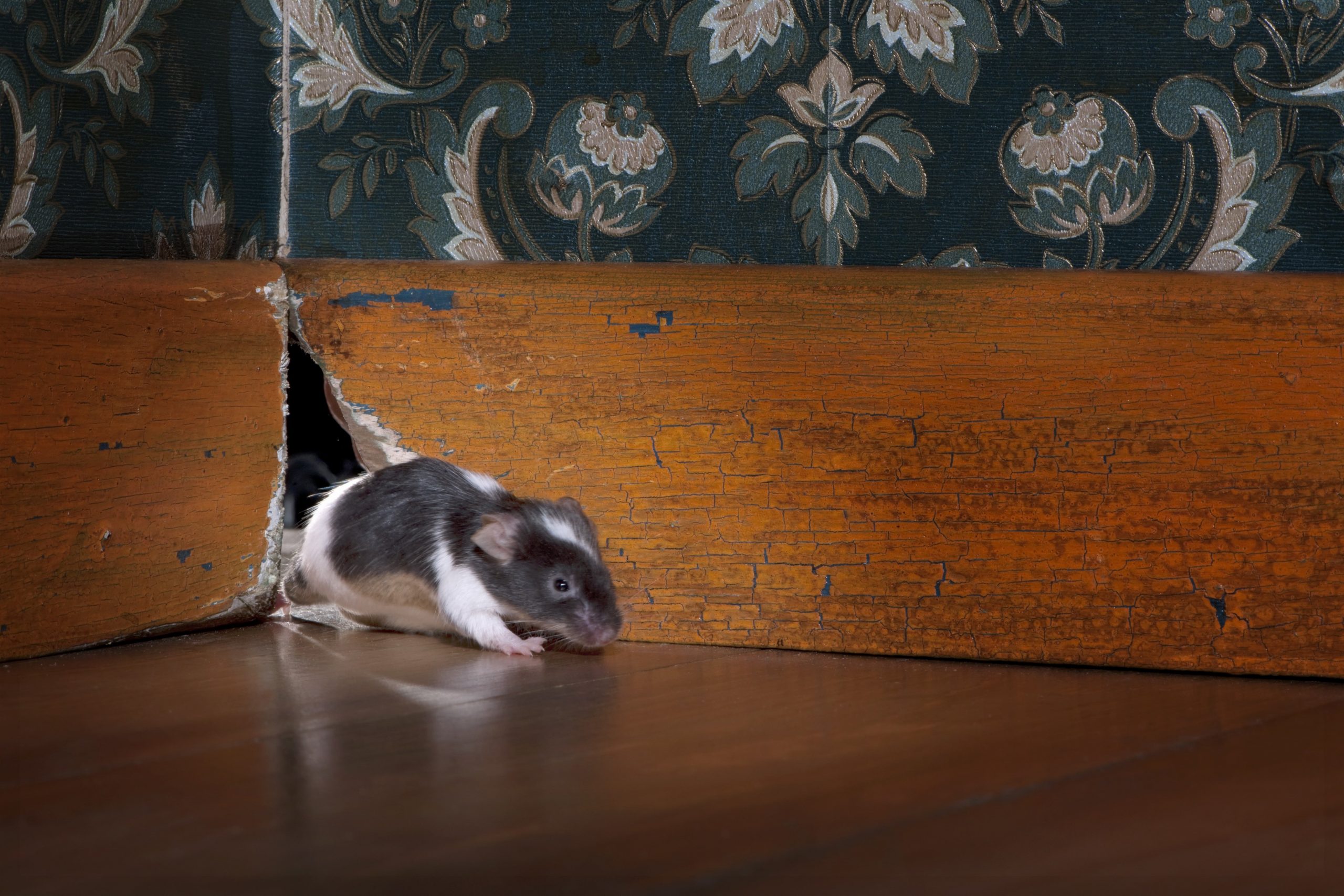
Clients are always asking us ‘how are mice getting into my home?’ Never underestimate mice. These critters are smart and amazingly adept despite their size. The reality is that no home or building is usually 100 percent sealed, and they can get through cracks as small as a #2 pencil. That’s about ¼ inch, or smaller if it’s a baby, or about the size of your pinky.
Trees and bushes, power lines or cables, latticework can provide ladders to help mice find easy access to your home. Mice can also climb walls, including brick and many other surfaces. Mice are good jumpers, too!
Bottom line: If a mouse squeeze its head through a hole, it can get into your home.
Why are mice in my home?
Mice love your home for many of the same reasons you do. It’s warm, charming, safe and convenient. It’s a great place to raise a family, and it’s a great place for mice to breed. Your home has everything a mouse needs to survive: Food, shelter and water.
It’s true that rodent issues are more common winter pest problems, but they are not only a problem when it’s cold outside. Mice are found in homes year-round.
Your home is also safer and more convenient than living outside, where they face threats from predators and challenge of finding food.
How can mice live in my home?
Mice do not need much when it comes to food and water. The typical mouse eats about a gram of food per day. Crumbs, seeds and other droppings are more than enough to sustain a mouse.
Mice also do not need much water. Most of the water a mouse needs can come from moisture in their food sources. But as we said earlier, they can always go outside for water through tiny cracks in your home.
Once inside your home, mice will find quiet corners to nest. These are frequently in the basement or attic, areas of your home that are frequently less visited by you and therefore less likely to be discovered and disturbed. Mice inside a home can be disgusting, but are also a health issue. Mice can spread diseases including salmonella. Though rare, mice and rats in a home can lead to deadly illnesses.
Mice also like to be near their food source. Other common areas for nesting are behind or inside the motor compartment of appliances, inside cabinets, or voids in walls behind cabinets. Inside the back of a refrigerator or dishwasher is a common nesting area. Mice can also chew through dishwasher water lines for a water source.
Newspapers, cotton, paper towels and old clothing makes perfect nesting materials for mice. A box of old clothing or papers stored in a basement or attic can be the perfect place for mice to nest.
Missing the early signs of a mouse problem can quickly lead to a rodent infestation. Mice can breed rapidly and soon enough you could have a major problem on your hands.
How are mice getting into my home?
As perfect as you think your home is, the reality is that most homes are poorly sealed. Cracks and crevices around the foundation, utility line entries, gutters are far more common than you realize. But even a well-sealed home changes over time. Just as you may not have had a leaky roof a month ago, conditions change. Caulk and grout may dry and crumble. Weather can also wear on a home. Mice are very good at taking advantage of these changes and defects as well as using their sharp teeth and nails to make them even bigger.
Common mice entry points
Garages and roofs are common mice entry points. Garage doors often do not full seal in the corner, allowing easy access for mice. Garage doors that do no close flush to the ground can also provide entry points. One home we recently visited in McLean, VA had a gap under the garage door because of an extension chord used to connect Christmas lights. Mice were able to enter the garage and then climbed through gaps in the wall and into the attic.
Other areas to watch for rodent entry points include:
- Gaps under the siding near the ground.
- Gaps around where gas, water, cable and other utility lines enter homes.
- Poorly sealed crawl spaces and crawl space vents.
- Vents and attic gables.
- Drain pipes (rats can live in the sewer and have been known to swim up through toilets!!).
- Openings between the gutters and fascia.
A professional pest control company such as My Pest Pros can help identify and seal gaps in your home that you or other home contractors may miss. Call today for mice and rodent control at 703-665-4455 for an inspection!